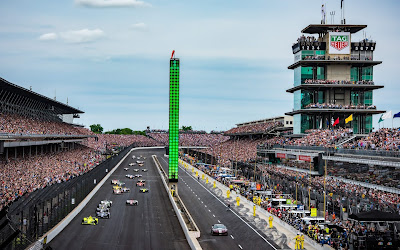Sports venues traditionally involve a large carbon footprint. The list of professional sports facilities implementing solar energy for more sustainable operations continues to grow.
Here is a rundown of how the major United States sports leagues are winning the game with solar power installations.
NFL
More than a third of NFL stadiums are using solar systems. The most recent stadium built with solar panels is SoFi, home of Los Angeles Rams and Chargers.
The Philadelphia Eagles Lincoln Financial Field boasts the largest solar-power capacity among all NFL stadiums. The system of more than 11,000 panels, together with 14 wind turbines, produces more than four times the energy needed for all home games during the season.
Mercedes-Benz Stadium is home to the Atlanta Falcons and MLS Atlanta United. Built with over 4,000 solar cells, this system has the capacity to provide 1.6 million kilowatt-hours of electricity per year. The panels are installed on the roof, over entry gates, and on parking lot carports.
Other notable NFL stadiums using solar energy include CenturyLink Field (Seattle Seahawks), MetLife Stadium (New York Giants and New York Jets), Gillette Stadium (New England Patriots), FedEx Field (Washington Football Team), Levi Stadium (San Francisco 49ers), and NRG Stadium (Houston Texans).
MLB
Competitive with NFL solar penetration, 10 of 30 MLB ballparks use these environmentally friendly panels to produce energy.
Like the NFL, MLB systems vary as to how much of building operations are handled by solar power. Over 2.1 megawatts of solar capacity are installed in outfields, on ticket booths, in parking garages, atop seating canopies, and on dedicated pavilions at MLB stadiums.
The Washington Nationals stadium opened in 2008 as the first U.S. sports stadium to earn a LEED silver certification. Fast forward several years and the team has doubled down on sustainability by adding a 1.46-megawatt solar array of 4,080 panels. This is the largest array of any MLB stadium.
Capitalizing on plentiful Southern California sunshine, San Diego’s Petco Park ranks second. In 2018 the Padres installed 716 photovoltaic panels capable of generating 40,000 kilowatt-hours of power each year.
The Colorado Rockies’ Coors Field was the first major professional U.S. sports stadium to adopt solar energy.
Other MLB ballparks utilizing sun power include Busch Stadium in St. Louis, Chase Field in Arizona, Kauffman Stadium in Kansas City, Oracle Park in San Francisco, Progressive Field in Cleveland, and T-Mobile Park in Seattle.
Boston’s Fenway Park, the oldest stadium in use today, uses solar thermal panels to heat water, rather than generate electricity.
NBA
The NBA claims the largest stadium solar system.
Golden 1 Center, home to the Sacramento Kings, has a dual-source array. A 1.2-megawatt solar array mounted on the arena roof is supplemented by an 11-megawatt power purchase agreement with a nearby solar farm.
The Staples Center, which both Los Angeles NBA teams call home, features 2,000 cells. Named for a leading solar industry company, the Utah Jazz Vivint venue has installed 2,700 panels.
Other NBA arenas using solar arrays include Denver Nuggets’ Pepsi Center and Phoenix Suns’ US Airways Arena.
NHL
The NHL has made a big sustainability commitment, but thus far solar use is limited.
Two teams currently generating solar power on-site are the Colorado Avalanche at Pepsi Center and Los Angeles Kings at the Staples Center. Both share facilities with NBA franchises.
Washington’s Capital One Arena, which is shared with the NBA Wizards, uses off-site generated solar power. The Minnesota Wild Xcel Energy Center features 348 solar electric panels on the parking garage.
The expansion Seattle Kraken begins play this fall in a net-zero-carbon certified venue, aptly named Climate Pledge Arena, that has a solar array capable of generating 1.2 megawatts of energy.
Indy 500 & NASCAR
Two of the largest solar sports venues are the Indianapolis Motor Speedway, home of the Indy 500, and the Pocono Raceway in Pennsylvania. Each is powered by nearly 40,000 solar modules.
Solar helps professional sports teams lower their energy bills and support sustainability.
Sports teams develop a significant connection with their fans, so embracing solar provides an opportunity to encourage interest and acceptance of this renewable energy source throughout the community.













































